| |
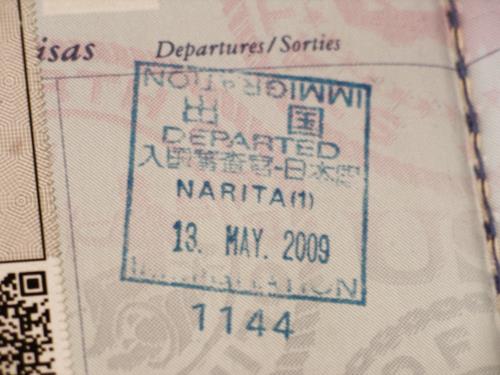 An adventure ends...All good things must come to an end, and our lives in Japan were no exception. On May 13th — two years, one month, and 18 days after Matthew arrived in Japan — we moved back to the U.S. Let's Sharing, too, is at its end. It was created to share our lives in Japan with our friends and family back home. We didn't expect our little blog would be a big hit, but it turned into a great success with more than 31,000 hits over its two-year run. For that, we want to thank all of our readers. The web site and archives will remain, but it will no longer be updated. ... an adventure beginsSo, what's next for us? We're going back to our lives in America, but we like to think that our experiences in Japan have trained us to view our world with eyes and ears more open than before. In the same spirit as Let's Sharing, we'll be writing a new blog, Hokui 39 Do, to share American life with our friends in Japan. We'll write most of it in Japanese, but there will be some posts in English and lots of pictures. So if you enjoyed Let's Sharing, you may find Hokui 39 Do interesting, too.
[ 2 comments ] permalink
Today is Children's Day in Japan. Children's Day used to be called Boys' Day, the day on which families celebrated the lives of their male children. Girls' Day, you might remember, is celebrated on March 3. There are special symbols associated with Children's Day. The most common one is probably koinobori, the carp streamers. Less well known are the displays of kabuto, traditional Japanese military helmets.  You can also see some small koinobori to the right of the helmet in this display at a local restaurant.
We went out with some of Matthew's students last week after their last class together. It was a cold night (because winter lasts forever in Tohoku), so oden was in order. 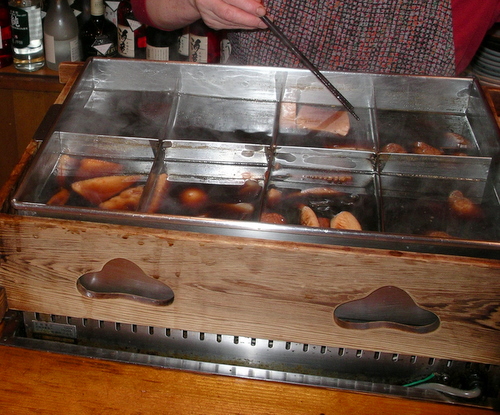 Oden Oden is a winter dish made by simmering ingredients in a dashi stock flavored with soy sauce and other seasonings. Common ingredients are hard-boiled eggs, kamaboko (fish paste), tofu, konnyaku (devil's tongue jelly), bamboo shoots, and slices of daikon radish. At this shop, each ingredient gets cooked in its own little compartment of the stock vat. You choose what you want from the vat, or tell Mama-san to serve up one of everything, and eat it with swipes of spicy mustard from the lip of the dish. 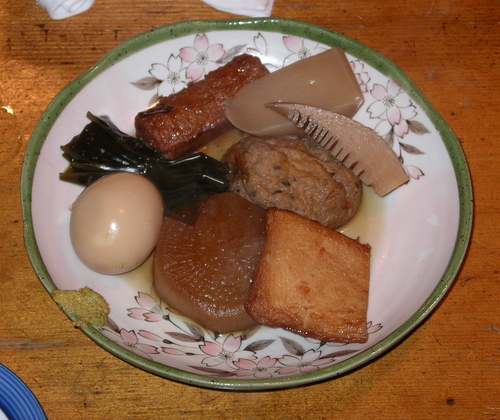 Clockwise from the mustard, we had a hard-boiled egg, konbu-maki (rolled kelp), gobou-maki (burdock root wrapped in fish paste), konnyaku, bamboo shoot, ganmodoki (deep-fried ball of tofu mixed with shredded vegetables and seaweed), kamaboko, and daikon. Oden is great with either sake or beer.
Cherry blossoms hover outside the torii gate at Suwa-jinja in downtown Kitakami. 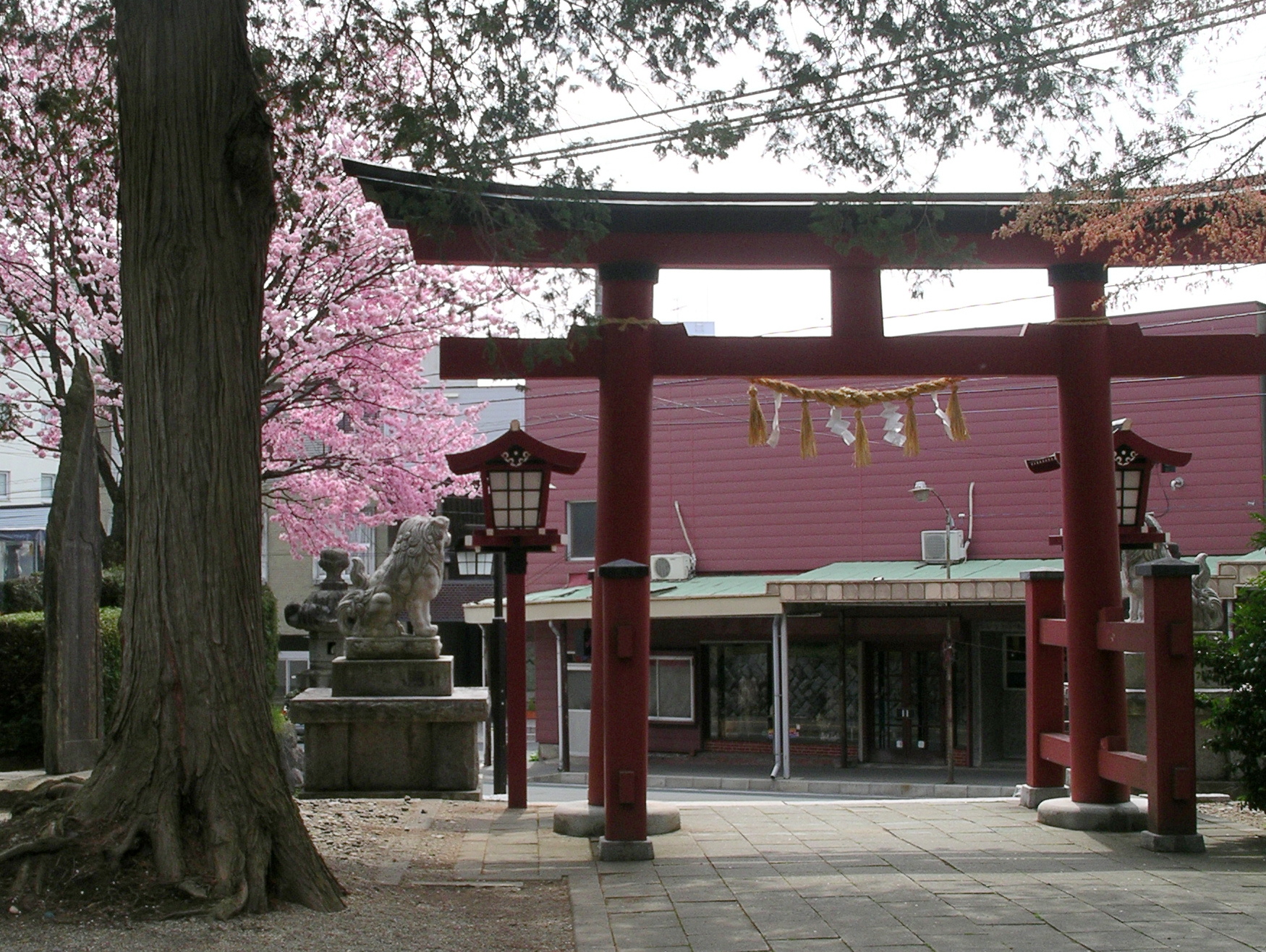
Famous writer and poet Miyazawa Kenji was born in Hanamaki, just north of Kitakami. Hanamaki is full of public art that references his works, including this mural of his best-known story, " Night Train to the Stars". The mural is painted in invisible UV-reflective paint, and illuminated by blacklight at night. So what appears to be an ordinary retaining wall by day transforms into a glowing image of trains and planets after dark. 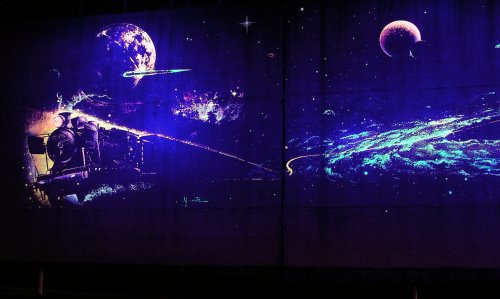
The "cherry blossom front" is finally crossing Kitakami on its northward journey. In the warmest parts of town, the cherry trees are in or near full bloom, while they're just starting to bloom in cooler areas near the rivers or in the mountains. Here are the cherry trees at the tiny Buddhist temple near our house. 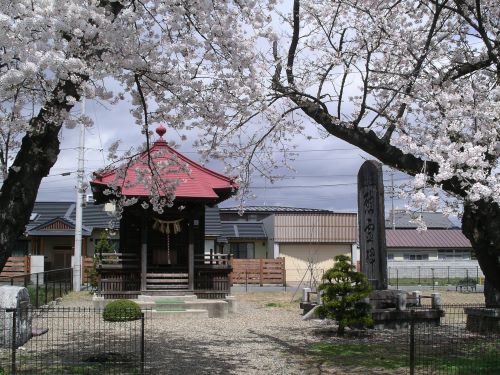
The gutters on the sides of many roads here are deep ditches, and in the countryside where they are uncovered, you have to drive carefully lest you allow a wheel to drop into one. In the cities, however, they are usually covered with blocky cement caps. Although there is space between the caps for water to drain into the ditches, they are also frequently interrupted by grates and grills to ensure that even large amounts of water can drain away. Of course, many of these grates and grills are simple grids of steel. But if you've seen the manhole covers we've posted about, you might not be surprised to learn that some are more decorative. The most common decorative design seems to use a honeycomb grid and the city logo in the center. 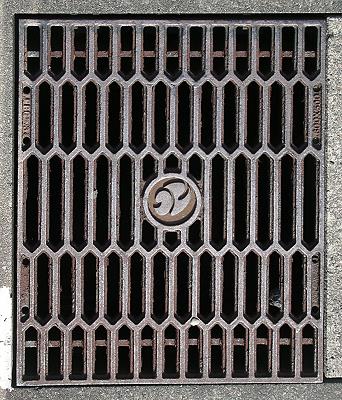 There are some still around with an old city logo, too. 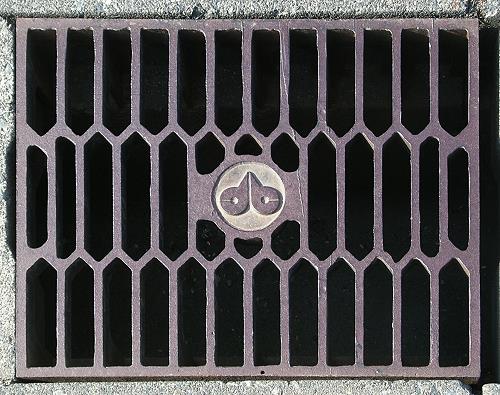 This logo is the prefectural symbol of Iwate. 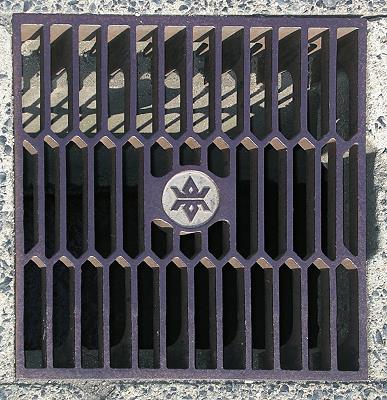 The logo doesn't have to be on a honeycomb, either. Here's one with a slanted grid. 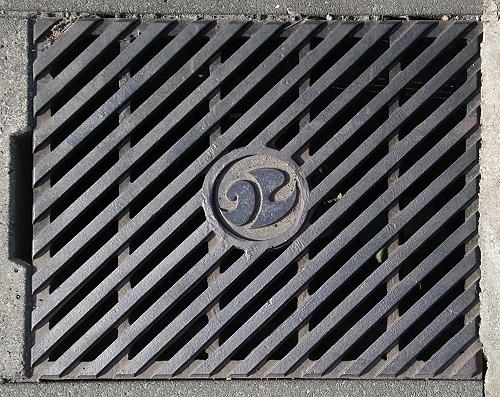 The maze-like pattern on this one evokes ancient western cultures. 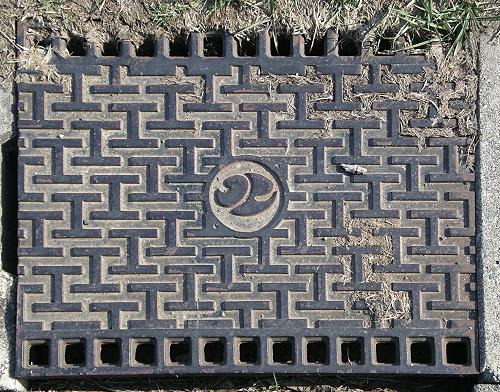 Not all of them are just a logo. Some feature the city's official flower, the white lily. 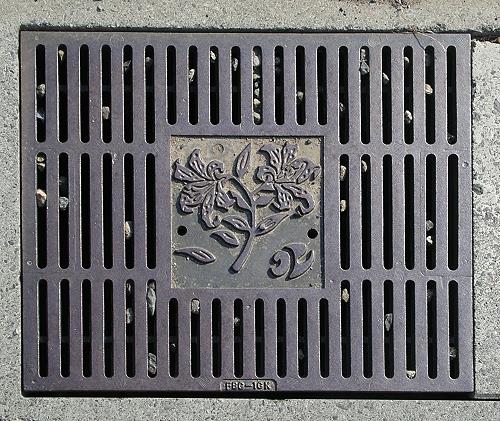 The largest and most extravagant ones — with white lilies, again — are along the main street running away from the station. 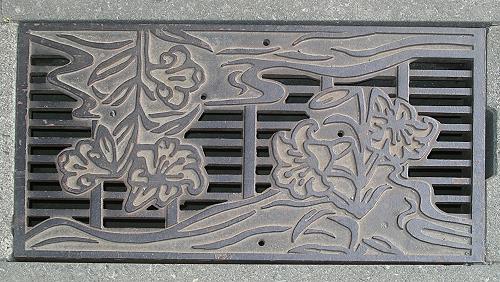
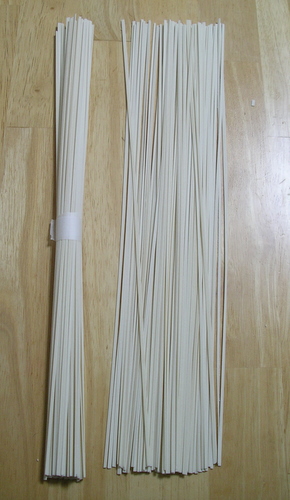 Inaniwa udon Inaniwa udon is a specialty of neighboring Akita Prefecture. Unlike the more common fat, roundish udon, Inaniwa udon is very thin and flat. It has a very slippery texture, which makes it kind of tricky to eat.
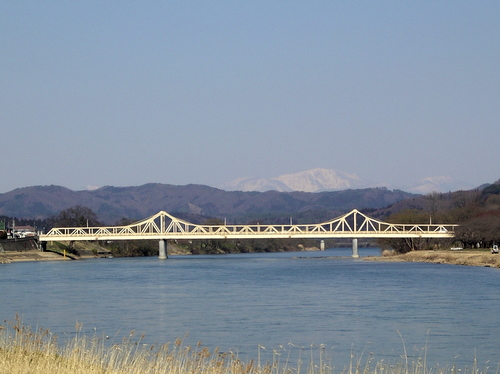 Sangobashi is the bridge connecting central Kitakami to the other side of the Kitakami River. Hayachine-san, visible only on the clearest of days, rises in the background.
Thursday, April 2, 2009, 9:06 PM GeneralPosted by stefanie The changing of seasons from winter to spring is marked by personal transitions in Japan. The school year ends in March and resumes in April. March is also the month during which many companies transfer employees, presumably so they can get moved and settled in before school starts again. People leave and/or begin things like language classes or health club memberships. Spring is a time when many people bid farewell to old lifestyles and prepare to embrace new ones. This year, we're the ones saying goodbye. In about six weeks, we will leave Kitakami to return to Washington, ending our life in Japan. We're starting to clear out the house and think about what we'll take back with us ( kotatsu!). We've taught some of our classes for the last time as they are transitioned to new teachers. And we're visiting old favorite places, keenly aware that (in many cases) that visit will be the last. To be sure, we still have many good times ahead. There will be lots of opportunities to visit with our friends and students before we leave and days to walk in the park with the dogs. There will be cherry blossoms and festivals and new experiences. Such is the plight of the leaver: torn between the sadness of making necessary departure arrangements and the joy of making the most of every moment in a beloved place. Our life in Kitakami is a good one, which makes it hard to leave. All we can do is embrace our remaining time here, knowing that the things that make leaving difficult — good times, good friends, and good memories — are the same things that will make returning to our life in America easier.
Next
|
|










 Calendar
Calendar




